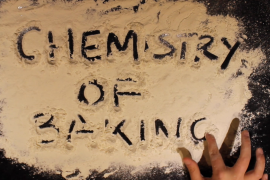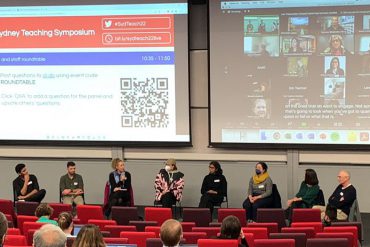The month’s highlights on higher education from across the web
1. How universities can enhance student mental wellbeing: the student perspective
 How universities can enhance student mental wellbeing: the student perspective from Higher Education Research & Development
How universities can enhance student mental wellbeing: the student perspective from Higher Education Research & Development
“What can be done to improve student wellbeing?” Researchers from the University of Melbourne investigate this important issue in a recent paper, with n=2776 open-ended responses. Critically, the key factors are academic teachers and their teaching practice: “our analysis shows that, from the student perspective, academic teachers can play a critical role in reducing stressors in the learning environment, not only in terms of their teaching skills and practices, but also through their attitudes to teaching and to students”. Attributes such as teachers’ approachability, empathy, student-teacher relationships, communication, individual support, and interactive pedagogies all contribute to this. This is a striking validation of the approaches in the Student Experience Strategy and Education Strategy to improve the quality of teaching through increasing *person*alisation and interactive and collaborative learning. Not only will this be good for student learning, but for student wellbeing as well. You can also read the full report from the University of Melbourne, which includes interesting findings and advice on the connections between mental wellbeing, teaching strategies and curriculum design.
2. The Distracted Classroom: Is It Getting Worse?
 The Distracted Classroom: Is It Getting Worse? from The Chronicle
The Distracted Classroom: Is It Getting Worse? from The Chronicle
James Lang continues his series on the distractions of technology in the classroom with a second piece that considers the problem from a historical perspective (see Teaching@Sydney’s March newsletter for a summary of part 1). Although a systemic tendency for humans to be distracted was noted during the Industrial Revolution and cognitive science has since shown that issues of attention are related to structural aspects of the human brain, contemporary society provides unprecedented challenges due to the increasing amount of information available and the pace of technological change. Research in the book Distracted Mind: Ancient Brains in a High-Tech World suggests that exposure to information stimulates reward centres in the brain, causing humans to repeat the behaviour that led to it. Mobile devices provide an easy and endless source of information which is highly addictive. Teachers are competing with this temptation in the classroom and worse, it can take the student almost 30 minutes to refocus on the original task they were engaged with. Despite this, Lang argues that we should not attempt to ban the use of technology in the classroom because outside of it, students are immersed in a world full of its distractions. Rather, we should consider how to help them manage it to support their learning. The next article in the series will look at tips for managing distraction.
3. Why Students Can’t Write — And Why Tech Is Part of the Problem

Why Students Can’t Write — And Why Tech Is Part of the Problem from EdSurge
Student writing is in crisis claims John Warner, who has taught the subject in higher education institutions for over 20 years. Formulaic writing tasks are partly to blame because they encourage what he describes as a “paint-by-numbers” response, which is akin to a surface learning approach. Unfortunately, the shortage of funding for public higher education institutions makes strictly controlled writing tasks more attractive because they lend themselves to automatic marking technology. While not all technology is bad and many social media platforms have had a positive effect on developing writing, Warner believes that many common educational technologies such as grades notifications add to an atmosphere of surveillance. This sense of being tightly monitored reduces students’ ability to take risks, which is essential for developing themselves as writers. He emphasises the intellectual work involved in becoming a writer and the importance of creating classroom conditions for developmental aspects of writing such as finding purpose, choosing an audience and customising the communication to suit.
4. Don’t cheat yourself: Scenarios to clarify collusion confusion
 Don’t cheat yourself: Scenarios to clarify collusion confusion from La Trobe e-BUREAU
Don’t cheat yourself: Scenarios to clarify collusion confusion from La Trobe e-BUREAU
The release of Katherine Seaton’s (free) new e-book “Don’t cheat yourself: Scenarios to clarify collusion confusion” is a timely one, given the current (heightening) debates around cheating at universities, which has staff, students, and even the federal government weighing in, with new draft legislation being proposed that would make it an offence to provide or advertise cheating services to university students. Seaton’s e-book deals with academic integrity in mathematics, with a particular focus around how to have relevant and meaningful conversations with students about academic integrity. While pitched towards maths and maths students, it also contains many useful and applicable ideas for non-maths disciplines. The core of the book includes a number of interesting, realistic, easily transferable scenarios on what academic integrity might look like and ways of dealing with them, including discussion prompts to use with your own students. You can download a free copy of the e-book from La Trobe university’s open educational resource publisher, La Trobe e-BUREAU.
5. Student access of online feedback is modified by the availability of assessment marks, gender and academic performance

Student access of online feedback is modified by the availability of assessment marks, gender and academic performance from the British Journal of Educational Technology
Research across all levels of education shows that feedback has one of the highest impacts on students’ achievement. The value feedback has on students’ learning can depend on a number of different factors, including timeliness, clarity, and relation to the assessment criteria and standards for an assessment task. In this recent study from the British Journal of Educational Technology, researchers continue to look at the value and effectiveness of feedback by investigating how access to online feedback by students is influenced by gender, academic performance, and interestingly, by the way marks and feedback are made available to students. Critically, the study found that by integrating feedback with assessment marks* it significantly increased the amount of students who accessed their feedback files, as well as minimising feedback access disparities that are associated with gender. These findings got many of you talking on Yammer over the last month, sharing ideas around how you engage students with their feedback and also try to shift the focus away from a final numerical grade. The posts make for an interesting read with some immediate practical implications for our teaching practices. Indeed, if a relatively small change such as adapting the way we provide feedback to our students – that is, as an integrated package of feedback+marks – can have such as positive influence on access of assessment feedback provided to students, then surely we could (should?) try it? In the end, accessing the feedback is the first step along the way to reading it and applying it in a useful way, which is what we are all hoping to achieve!
*that is, by having the written feedback and final grade accessed together at the same time, rather than having the grade appear separately from or before the written feedback. When this occurs, the final grade is often reviewed but not the (arguably more useful) written feedback.
6. Testing in the Classroom: The Importance of Feedback
 Testing in the Classroom: The Importance of Feedback from The Learning Scientists
Testing in the Classroom: The Importance of Feedback from The Learning Scientists
Continuing with the feedback theme comes this interesting Learning Scientist blog post on the importance of feedback during test or exam-type assessments. Carissa DiPietro writes that although exams or tests are common assessment tools deployed throughout all levels of teaching and learning from K-12 to tertiary levels, in higher education testing is “less commonly considered as a tool to facilitate learning”. DiPietro explains that testing can be a valuable learning tool, helping with learning strategies such as retrieval practice for students, also but warns that without feedback, testing can carry significant risk. For example, there is the potential for students to retrieve incorrect information, remembering it as correct, even if it is not. By not building in opportunities to address such misconceptions through feedback mechanisms, we run the risk of having a negative impact on learning, rather than a positive one. This is particularly true, DiPietro says, for multiple-choice exams. The post finishes up with a short discussion on the current evidence around on best way to provide feedback to students during testing, including a particularly novel approach that lets you to give feedback to students, in real time, during multiple-choice pen and paper exams!





